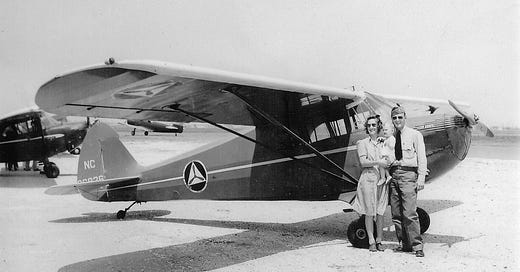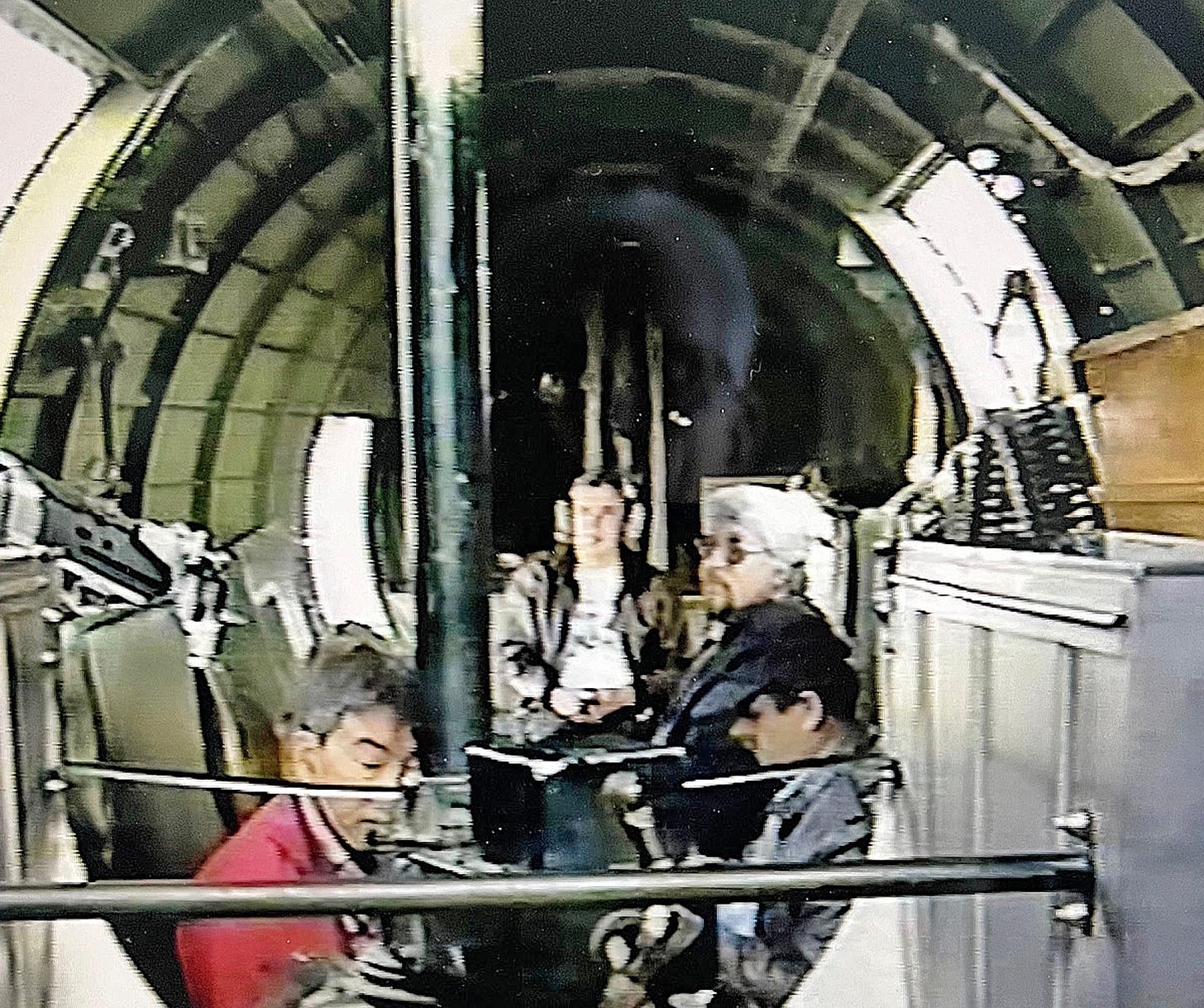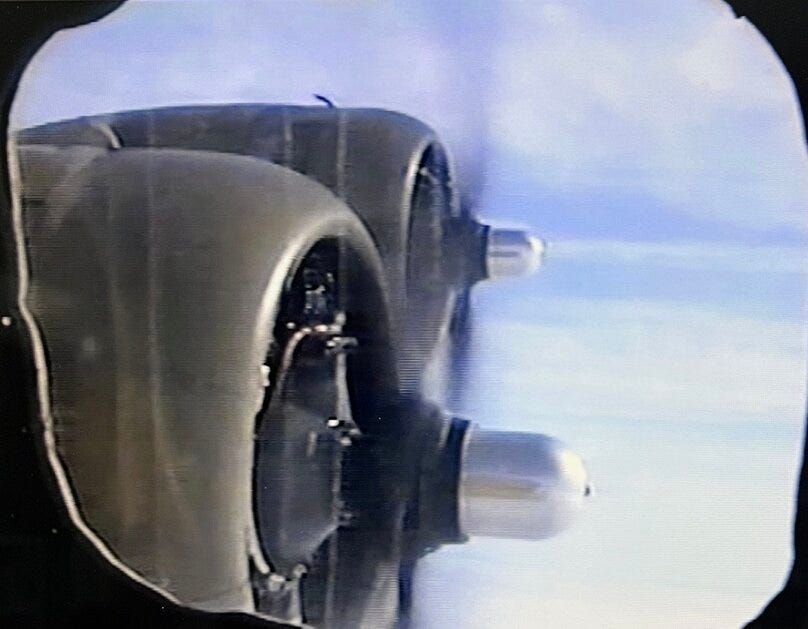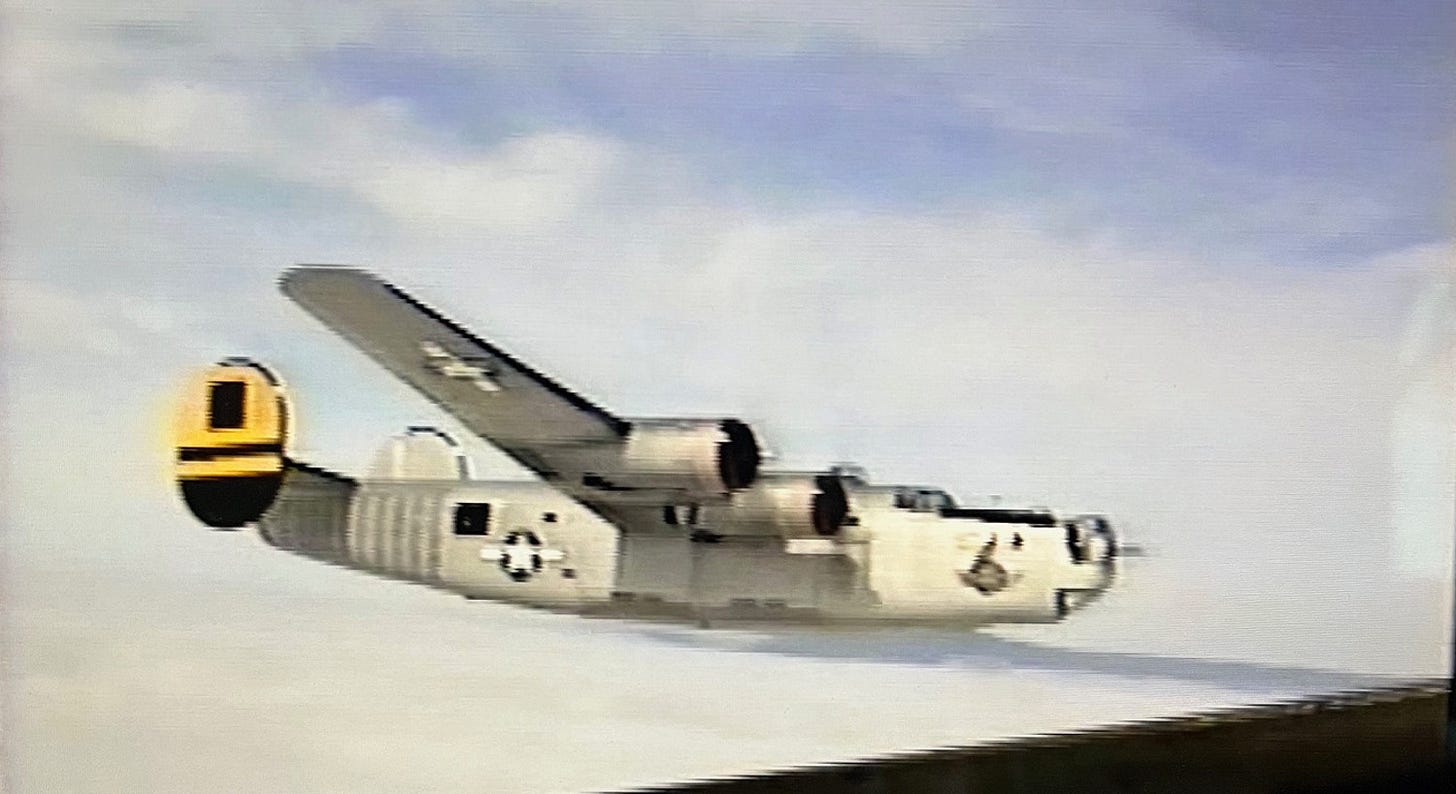Note: Today’s guest contributor is Gary Horstkorta, an accomplished author who writes about history, automobiles, and much more. His premiere piece for Tilting West told of his adventures riding a motorcycle around the hills of Livermore. In this article he takes us on a different sort of ride—aboard an historic B-17 bomber from World War II. History enthusiasts and others will surely appreciate how he takes us inside the cockpit of the plane and imagines what it must have been like for those brave young men flying on a mission across the dangerous skies of Europe and the Pacific.—Kevin Nelson
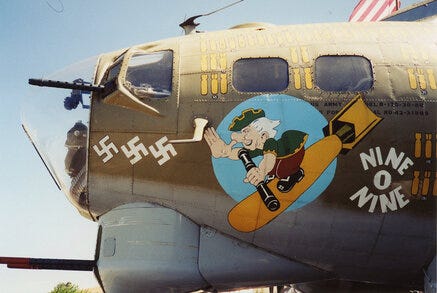
By Gary Horstkorta
One of my favorite subjects in school had always been history, an interest I carried over into adulthood. Since I was a child of the World War II years and my father served in the U.S. Navy, I suppose it was natural that I became interested in WWII history.
During his service, my father earned his private pilot’s license and flew my mother and I (not quite one year old at the time) from Texas where he was based to their pre-war home in Northern California. The journey was made in a two-seat Piper Cub aircraft and I spent the four day flight seated on my mother’s lap. Long before there was GPS, we flew low so my father could navigate by following the railroad tracks west. After a short visit with relatives we headed back to Texas and with more favorable winds, the trip took several hours less. I had completed my first airplane roundtrip even before I could walk.
Years later my father renewed his private pilot’s license and I flew with him on many flights around Northern California, trips I always looked forward to. I also enjoyed flying commercially on vacations or for business and have wondered if that first flight as a child had left an indelible mark on my consciousness. Not surprisingly, my interest in WWII history focused on aviation, the pilots, their planes, and the missions they flew.
Reading books, watching movies and documentaries on TV are all excellent sources for information on WWII history, however, there is nothing like being up close and personal with the actual military vehicles, ships and aircraft that served in the war. There are numerous museums available to visit including the Smithsonian Air and Space Museum, the WWII Museum in Louisiana, the Planes of Fame in Chino, California, and a variety of others throughout the United States.
In addition there are many organizations that provide opportunities to view WWII aircraft in flight and inspect them on the ground. One such organization is the Collings Foundation, a family owned, non-profit, educational foundation in Stow, Massachusetts. Their stated mission is “Preserving Living Aviation History.” Founded in 1979, the Collings Foundation collected and restored a large number of aircraft over the years including several WWII aircraft. In 1989 they began their “Wings of Freedom Tour” of aircraft including a B-17, B-24 and P-51 aircraft visiting selected airports around the U.S.
Fortunately, Livermore Airport, near my home, was one of the airports they would fly into each year. Around Memorial Day, the trio of planes would arrive to offer tours and flights for a weekend before moving on to their next destination. In May 1995, I along with a number of others, arrived at the airport on Friday afternoon to watch the three aircraft land and taxi into their designated parking spots near the terminal building. Seeing and hearing these aircraft in person was quite a thrill, which brought to life all the aerial action accounts I had read or watched in the past.
When the gates opened, I purchased a ticket to tour the B-17, one of the most iconic aircraft of WWII. Of the 13,000 B-17s manufactured during the war, there were less than a dozen still flying so this indeed was a rare opportunity to see this aircraft in person. Walking around the outside of the plane, I was struck by its size; it was smaller than I expected based on its nickname as “The Flying Fortress.” Climbing inside I was able to view the flight deck, then down below to the bombardier’s position in the nose, the flight engineer and radioman’s area.
Next I squeezed through the bomb bay then back through center section and out the small exit door before the tail gunner’s location. I could not imagine spending many hours in freezing temperatures on a mission that could be 2,000 miles long in such tight confines with nine other crew members.
As I climbed out of the B-17, I overheard one of the guides talking to another visitor about the “Dawn Patrol” that was to take place the following morning. With a favorable weather forecast, the aircraft was scheduled for a one hour flight and anyone interested could sign up a the table near the entrance gate. Wow, a ride on a B-17, what a great experience.
This sounded worthy of more investigation so I walked over to the table where I received further details. The cost was $300 for the flight, and I would need to be on site at 7 a.m. for check-in. Well, this was an opportunity I could not miss. I signed up and bought a ticket.
The next morning, I arrived at the airport a few minutes before 7 a.m., checked in, and was directed to the rear of the parked B-17. Several other individuals were already there chatting with what appeared to be a crew member. Once all who had signed up arrived, we were instructed to board the plane through a small door near the tail of the aircraft.
Once on board we walked forward to the next crew member waiting for us. We were standing in what appeared to be the navigator/radio operator’s area but there were no seats, only a plywood floor with seat belts. We were instructed to sit on the plywood floor and buckle the seat belt over our lap. I thought to myself, “Now I know the meaning of flying by the seat of your pants! This doesn’t look like an FAA-approved way to insure passenger safety, but what the heck, let’s get into the air.”
After a check to make sure everyone was belted in, the crew member gave a thumbs up to the pilot and co-pilot. One at a time, each of the four engines were started in succession, then with all running, we sat for a few minutes while they warmed up. At this point, the plane was shaking with the noise level having increased noticeably.
As I looked around the area I thought about all those young WWII airmen (late teens to early 20s) thinking about the mission they were embarking on. Besides the long flight to and from their target, they would contend with freezing temperatures, intense enemy anti-aircraft flak and hordes of fighters. There was nothing but a very thin metal skin of the fuselage between the crew members and the outside elements for protection. A rather chilling realization as they flew at high altitudes on their dangerous mission.
I would not have slept the night before a mission and would have been a nervous wreck until the action started. If they were lucky enough to survive 25 missions which satisfied their tour of duty, they would be sent back to the U.S. and replaced by a new crew. These were very brave and courageous young men that flew these missions day after day.
With the engines running smoothly, we taxied to the end of the runway and turned into the wind coming to a momentary stop. As the pilot applied the throttles the engine noise increased and we began to move. The plane bounced along the runway with our speed increasing and suddenly we were airborne about half-way down the runway. After climbing up to our cruising altitude, we began our aerial tour of the greater San Francisco Bay Area. We were allowed to unbuckle our seat belt and begin our exploration of this historical aircraft. We were free to walk forward to the bombardier’s location in the nose and take in the incredible view of the landscape below through the plexiglass windows.
Heading towards the rear of the aircraft, I passed through our seating area followed by the bomb bay to the plane’s mid-section, careful to step around the belly gunner’s turret under the floor. We were fortunate to have a warm day since the overhead observation hatch and the two waist gun position windows had been removed. As a result, the wind noise level increased appreciably but the open windows allowed for great views outside. The only restricted area was in the rear of the aircraft where the tail gunner’s position was located; it was cramped with limited outside views.
As I was standing in the open overhead hatch in the mid-section of the plane taking in the view, I saw another aircraft approaching us in the distance. After another minute or so I realized it was the Collings Foundation B-24 coming towards us. This was a real unexpected treat to see this beautiful aircraft slide in alongside our B-17 and if there ever was a great photo op, this was it. We flew in formation for a few more minutes before the B-24 peeled off and headed away in a different direction.
The flight time passed all too quickly and soon we were on our return to the Livermore Airport. Back in our “seats” and buckled up, the plane gradually descended on our approach to the runway. We touched down with the pilot making a smooth landing then taxied back to the appropriate parking area and the engines were shut down after we came to a stop.
This must have been the moment when an air crew, returning from a mission during the war, gave a collective sigh of relief. They had survived another mission, one of thousands flown by these courageous air crews that contributed to bringing an end to the war.
This one-hour flight had brought to life what so many young men had endured during their tour of duty. I have reflected on that flight many times since then and gained new respect for all those who served during the war. For many of the succeeding years I would attend the arrival of the planes of the Collings Foundation Freedom Tour just to watch the B-17, B-24, P-51 and B-25 (newly added to the tour). The sight and sound of these planes was something to witness, it never got old. I am so glad I took advantage of the opportunity to take a ride on one of America’s most famous aircraft; this was truly a once in a lifetime experience.
Ironically this same B-17, which had survived 75 years of service in war and peacetime, met a tragic end in October 2019. It crashed and burned at an airport in Connecticut, killing all seven personnel on board. As a result of the crash and subsequent investigation, the foundation decided to suspend indefinitely all future tours. Since then they have acquired another B-17, which was restored and put on display in the foundation’s excellent museum.
Recently an Apple TV+ streaming series, Masters of the Air, was released and is one of the most accurate and realistic depictions of what life was like for WWII air crews who flew missions over Europe from bases in England. Even though the Freedom Tour is no longer available for young and old to visit, this cable show will provide a good example of those missions, including a good deal of footage of the B-17 Flying Fortress.

